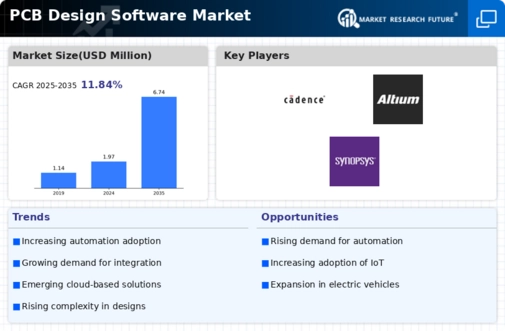Market Trends
Key Emerging Trends in the PCB Design Software Market
PCB design software offers engineers the flexibility to simulate the current design on a computer, allowing them to identify and address issues in real-time. The software provides access to advanced features like auto-placement, auto-routing, and auto-tuning, streamlining the PCB fabrication process and accelerating production. This technology addresses traditional challenges in the PCB industry, such as input signals, desired output, and error tolerance, contributing significantly to industry growth. The increasing demand for PCBs from end-users is exerting substantial pressure on PCB manufacturers. To efficiently design PCBs, manage costs, deliver feature-rich products, achieve product differentiation, and expedite time-to-market, companies are intensifying their investments in the PCB design process. This strategic focus on PCB design is a key driver propelling the growth of the PCB design software market. An illustrative example is the system design tool feature in PCB design software, which facilitates defining and partitioning electronic systems from a logical abstract level to the PCB. Over 33% of best-in-class companies extensively use this software enabler, surpassing the industry average. Virtual prototyping is another heavily utilized feature among PCB manufacturers, minimizing re-spins and enabling the design of higher quality products at faster rates. This tool has become a standard part of product design for many companies, making PCB design software essential for numerous PCB providers. Furthermore, additional features such as design for manufacturability, design collaboration, and design data management are enhancing the necessity of this software, driving market growth globally. The capability to optimize designs for manufacturing, collaborate seamlessly on design projects, and efficiently manage design data has become crucial for the PCB industry. In conclusion, the adoption of PCB design software is instrumental in addressing industry challenges and driving efficiency in the PCB fabrication process. The market is propelled by the increasing demand for PCBs, leading companies to invest significantly in PCB design to meet various requirements such as cost-effectiveness, product differentiation, and swift time-to-market. The extensive use of features like system design tools and virtual prototyping highlights the integral role of PCB design software in the contemporary landscape of electronic product development.

















Leave a Comment